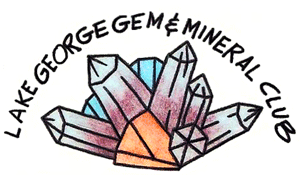This project all started when I made a flint knife. I was showing it to my Grandpa and he suggested we use some flint to make a fire. After that, we researched online how to start a fire with flint and steel (1). It sounded a lot more complicated than just making a spark with these two components but I became obsessed with the idea. So my Grandpa and I spent an afternoon collecting materials and trying to make a fire this way.
Step 1- Gathering the supplies: You can’t start this project without the proper materials, which are shown below. You need jute rope, char cloth, steel and flint. You must first prepare the char cloth. To do this I cut up small pieces, about 1 x ½ inch, from my dad’s old undershirt (you should ask first before taking a shirt), put them in an altoids tin (not overlapping) with holes punched in the top and then placed the tin in the embers of a fire we started in our fire pit using a lighter. We made about 10 pieces so I would have a supply of them. As the box heats smoke rises from the holes and the cloth turns black. It is fairly crumbly and will ignite really easily. The jute rope we cut into pieces about 3 inches long and then unraveled each strand to create a nest of fine jute fibers. I found flint in my rock bin that I found on a collecting trip and we bought a steel file from Home Depot.
Why flint? I tried using different rocks I had collected in my yard and on trips. Some of them broke because they were too soft, and none of them caused a spark until I used flint. Flint is a hard sedimentary form of quartz. When flint strikes steel the hard edge of the flint shaves off a particle of steel which exposes iron which then reacts with oxygen in the air creating a spark (2).
Step 2- Prepare the fire pit: Before trying to create a spark and light the fire you need to set it up. My method was to start by sticking a little newspaper in, balled up. Then I added lots of pine needles. After, I put some small wood kindling on top. Caution— don’t build the fire with wet twigs or needles.
Step 3- Getting a spark: This is much harder then you expect and even when you get a spark it doesn’t necessarily ignite the char cloth so you have to be very patient!! Take a piece of flint and a steel file and strike with great force while holding them close to a piece of char cloth. I tried several ways as shown- holding the char cloth on the flint in one hand and striking with the other. But I had the best luck putting the flint on top of the char cloth (with most of it visible) all on a flat surface like a log and then striking the flint with the steel. When you finally get a spark that lands on the char cloth you need to act fast. It will be obvious what is happening because the char cloth will turn orange where the spark hit and will start to burn.
Step 4- Lighting jute rope with the char cloth: This is the most exciting step. We managed to ignite many jute rope nests but some of them went right into flames and we dropped them before we even got them to our fire pit. These components burn very fast. With the lit char cloth stick it quickly into the jute rope nest and blow very hard. You will start to see smoke and then the whole thing will catch on fire. You want to be ready to stick it in the fire when this happens.
Step 5- Ball of flame used to light the pile of sticks: Once your jute rope nest is on fire, before it burns your fingers or you drop it, you need to stick it in the fire you built at the bottom so the newspaper and pine needles will catch on fire. You might need to blow on it some more as well. The goal is to create enough flame that the kindling catches on fire. I had a difficult time with this part and had to light several jute rope nests to get my fire. I also got really tired of blowing so hard on it.
Step 6- Get the fire going: If you manage to get your kindling burning you need to pile on more sticks and small twigs. As it grows add logs. This is the same method we use any time we start a fire when we are camping or using our fire pit. We have worked so hard we don’t want to spoil it so we have a pile of logs ready to go and chairs set up around the fire pit for a night of fun.
Step 7- Enjoying s’mores and perhaps a scary story: No fire is complete without s’mores. Recommended additional supplies before starting your flint and steel fire are marshmallows, Hersheys chocolate and cinnamon graham crackers. With your nice hot fire you can roast a squishy marshmallow and then make the perfect s’more. I invited my friends over and we also told scary stories in the dark. Enjoy!
 About the author:
About the author:Jack Shimon is in 4th grade. He is an award winning poet, writer, and researcher. Jack was an invited speaker at the Denver Gem and Mineral show. Jack has wide interests in geology, paleontology, and geoarchaeology. He has spent half of his life as a member of the Pikes Peak Pebble Pups. He lives at home with his family and his dog Comet.
References:
1. “Making fire w http://en.wikipedia.org/wiki/Flintith flint and steel”. https://www.youtube.com/watch?v=IERpeSRBew0
2. “Flint”.
Article and photos © by Jack Shimon
Published by Porcupine Press Partners
Florissant, Colorado









